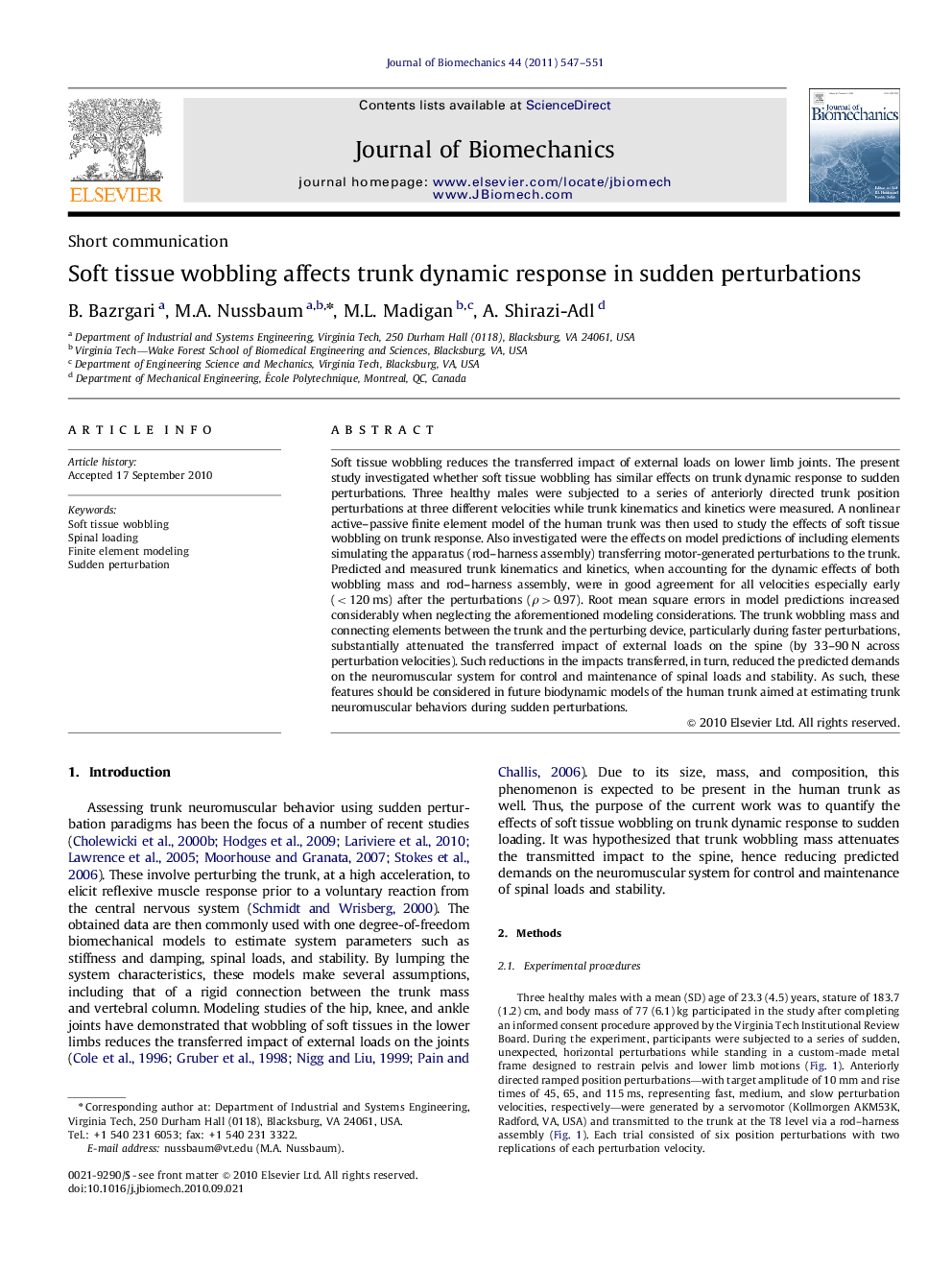| Article ID | Journal | Published Year | Pages | File Type |
|---|---|---|---|---|
| 873066 | Journal of Biomechanics | 2011 | 5 Pages |
Soft tissue wobbling reduces the transferred impact of external loads on lower limb joints. The present study investigated whether soft tissue wobbling has similar effects on trunk dynamic response to sudden perturbations. Three healthy males were subjected to a series of anteriorly directed trunk position perturbations at three different velocities while trunk kinematics and kinetics were measured. A nonlinear active–passive finite element model of the human trunk was then used to study the effects of soft tissue wobbling on trunk response. Also investigated were the effects on model predictions of including elements simulating the apparatus (rod–harness assembly) transferring motor-generated perturbations to the trunk. Predicted and measured trunk kinematics and kinetics, when accounting for the dynamic effects of both wobbling mass and rod–harness assembly, were in good agreement for all velocities especially early (<120 ms) after the perturbations (ρ>0.97). Root mean square errors in model predictions increased considerably when neglecting the aforementioned modeling considerations. The trunk wobbling mass and connecting elements between the trunk and the perturbing device, particularly during faster perturbations, substantially attenuated the transferred impact of external loads on the spine (by 33–90 N across perturbation velocities). Such reductions in the impacts transferred, in turn, reduced the predicted demands on the neuromuscular system for control and maintenance of spinal loads and stability. As such, these features should be considered in future biodynamic models of the human trunk aimed at estimating trunk neuromuscular behaviors during sudden perturbations.
